| 登録情報 | データベース: PDB / ID: 3ul7
|
|---|
| タイトル | Crystal structure of the TV3 mutant F63W |
|---|
 要素 要素 | Toll-like receptor 4, Variable lymphocyte receptor B |
|---|
 キーワード キーワード | IMMUNE SYSTEM / LRR / protein binding / MD-2 / extracellular matrix |
|---|
| 機能・相同性 |  機能・相同性情報 機能・相同性情報
detection of fungus / nitric oxide production involved in inflammatory response / MHC class II biosynthetic process / positive regulation of cellular response to macrophage colony-stimulating factor stimulus / lipopolysaccharide immune receptor activity / positive regulation of nucleotide-binding oligomerization domain containing 1 signaling pathway / positive regulation of matrix metallopeptidase secretion / detection of lipopolysaccharide / regulation of dendritic cell cytokine production / MyD88-independent TLR4 cascade ...detection of fungus / nitric oxide production involved in inflammatory response / MHC class II biosynthetic process / positive regulation of cellular response to macrophage colony-stimulating factor stimulus / lipopolysaccharide immune receptor activity / positive regulation of nucleotide-binding oligomerization domain containing 1 signaling pathway / positive regulation of matrix metallopeptidase secretion / detection of lipopolysaccharide / regulation of dendritic cell cytokine production / MyD88-independent TLR4 cascade / lipopolysaccharide receptor complex / negative regulation of interleukin-23 production / cellular response to oxidised low-density lipoprotein particle stimulus / TRIF-mediated programmed cell death / wound healing involved in inflammatory response / B cell proliferation involved in immune response / nucleotide-binding oligomerization domain containing 1 signaling pathway / positive regulation of nucleotide-binding oligomerization domain containing 2 signaling pathway / positive regulation of stress-activated MAPK cascade / Toll Like Receptor 4 (TLR4) Cascade / intestinal epithelial structure maintenance / Caspase activation via Death Receptors in the presence of ligand / positive regulation of interleukin-1 production / Regulation of TLR by endogenous ligand / macrophage activation / TRIF-dependent toll-like receptor signaling pathway / astrocyte development / microglia differentiation / nucleotide-binding oligomerization domain containing 2 signaling pathway / NAD+ nucleosidase activity, cyclic ADP-ribose generating / positive regulation of MHC class II biosynthetic process / positive regulation of platelet activation / positive regulation of macrophage activation / negative regulation of interleukin-17 production / MyD88 deficiency (TLR2/4) / positive regulation of cytokine production involved in inflammatory response / positive regulation of chemokine (C-X-C motif) ligand 2 production / positive regulation of extrinsic apoptotic signaling pathway / IRAK4 deficiency (TLR2/4) / negative regulation of cold-induced thermogenesis / positive regulation of smooth muscle cell migration / MyD88:MAL(TIRAP) cascade initiated on plasma membrane / MyD88-dependent toll-like receptor signaling pathway / T-helper 1 type immune response / toll-like receptor 4 signaling pathway / positive regulation of macrophage cytokine production / toll-like receptor signaling pathway / positive regulation of NLRP3 inflammasome complex assembly / RSV-host interactions / negative regulation of osteoclast differentiation / positive regulation of reactive oxygen species biosynthetic process / cellular response to lipoteichoic acid / negative regulation of type II interferon production / negative regulation of interleukin-6 production / Respiratory syncytial virus (RSV) attachment and entry / positive regulation of interferon-alpha production / positive regulation of interleukin-10 production / negative regulation of tumor necrosis factor production / phagocytosis / phagocytic cup / stress-activated MAPK cascade / positive regulation of chemokine production / cellular response to platelet-derived growth factor stimulus / ruffle / positive regulation of B cell proliferation / JNK cascade / ERK1 and ERK2 cascade / nitric oxide biosynthetic process / positive regulation of interleukin-12 production / positive regulation of smooth muscle cell proliferation / Regulation of TBK1, IKKε (IKBKE)-mediated activation of IRF3, IRF7 / IRAK2 mediated activation of TAK1 complex upon TLR7/8 or 9 stimulation / TRAF6-mediated induction of TAK1 complex within TLR4 complex / positive regulation of interferon-beta production / lipopolysaccharide-mediated signaling pathway / Activation of IRF3, IRF7 mediated by TBK1, IKKε (IKBKE) / IKK complex recruitment mediated by RIP1 / positive regulation of interleukin-1 beta production / positive regulation of interleukin-8 production / positive regulation of JNK cascade / lipopolysaccharide binding / Heme signaling / cellular response to mechanical stimulus / : / negative regulation of ERK1 and ERK2 cascade / cellular response to type II interferon / positive regulation of interleukin-6 production / positive regulation of type II interferon production / cellular response to amyloid-beta / positive regulation of inflammatory response / positive regulation of nitric oxide biosynthetic process / positive regulation of tumor necrosis factor production / transmembrane signaling receptor activity / signaling receptor activity / amyloid-beta binding / cellular response to lipopolysaccharide / ER-Phagosome pathway / response to lipopolysaccharide / defense response to Gram-negative bacterium / gene expression類似検索 - 分子機能 Variable lymphocyte receptor, C-terminal / Domain of unknown function (DUF3439) / Toll-like receptor / : / Leucine rich repeat 4 / Leucine Rich repeats (2 copies) / Leucine rich repeat N-terminal domain / Leucine-rich repeat N-terminal domain / Leucine rich repeat N-terminal domain / TIR domain ...Variable lymphocyte receptor, C-terminal / Domain of unknown function (DUF3439) / Toll-like receptor / : / Leucine rich repeat 4 / Leucine Rich repeats (2 copies) / Leucine rich repeat N-terminal domain / Leucine-rich repeat N-terminal domain / Leucine rich repeat N-terminal domain / TIR domain / Leucine Rich repeat / Leucine-rich repeat, LRR (right-handed beta-alpha superhelix) / Ribonuclease Inhibitor / Cysteine-rich flanking region, C-terminal / Leucine rich repeat C-terminal domain / Toll - interleukin 1 - resistance / TIR domain profile. / Alpha-Beta Horseshoe / Toll/interleukin-1 receptor homology (TIR) domain / Toll/interleukin-1 receptor homology (TIR) domain superfamily / Leucine-rich repeat, SDS22-like subfamily / Leucine rich repeat / Leucine-rich repeat, typical subtype / Leucine-rich repeats, typical (most populated) subfamily / Leucine-rich repeat profile. / Leucine-rich repeat / Leucine-rich repeat domain superfamily / Alpha Beta類似検索 - ドメイン・相同性 beta-L-fucopyranose / Toll-like receptor 4 / Variable lymphocyte receptor B類似検索 - 構成要素 |
|---|
| 生物種 |  Homo sapiens (ヒト) Homo sapiens (ヒト)
 Eptatretus burgeri (ヌタウナギ) Eptatretus burgeri (ヌタウナギ) |
|---|
| 手法 |  X線回折 / X線回折 /  シンクロトロン / シンクロトロン /  分子置換 / 解像度: 2.37 Å 分子置換 / 解像度: 2.37 Å |
|---|
 データ登録者 データ登録者 | Kim, H.J. / Cheong, H.K. / Jeon, Y.H. |
|---|
 引用 引用 |  ジャーナル: Plos One / 年: 2012 ジャーナル: Plos One / 年: 2012
タイトル: Structure-Based Rational Design of a Toll-like Receptor 4 (TLR4) Decoy Receptor with High Binding Affinity for a Target Protein.
著者: Han, J. / Kim, H.J. / Lee, S.C. / Hong, S. / Park, K. / Jeon, Y.H. / Kim, D. / Cheong, H.K. / Kim, H.S. |
|---|
| 履歴 | | 登録 | 2011年11月10日 | 登録サイト: RCSB / 処理サイト: PDBJ |
|---|
| 改定 1.0 | 2012年4月4日 | Provider: repository / タイプ: Initial release |
|---|
| 改定 1.1 | 2017年8月23日 | Group: Refinement description / Source and taxonomy / カテゴリ: entity_src_gen / software |
|---|
| 改定 2.0 | 2018年1月31日 | Group: Advisory / Atomic model ...Advisory / Atomic model / Derived calculations / Non-polymer description / Structure summary
カテゴリ: atom_site / entity ...atom_site / entity / pdbx_unobs_or_zero_occ_atoms / struct_site_gen
Item: _atom_site.B_iso_or_equiv / _atom_site.Cartn_x ..._atom_site.B_iso_or_equiv / _atom_site.Cartn_x / _atom_site.Cartn_y / _atom_site.Cartn_z / _atom_site.auth_atom_id / _atom_site.auth_comp_id / _atom_site.label_atom_id / _atom_site.label_comp_id / _atom_site.type_symbol / _chem_comp.formula / _chem_comp.id / _chem_comp.name / _chem_comp.pdbx_synonyms / _entity.formula_weight / _entity.pdbx_description / _struct_site_gen.auth_comp_id / _struct_site_gen.label_comp_id |
|---|
| 改定 3.0 | 2020年7月29日 | Group: Advisory / Atomic model ...Advisory / Atomic model / Data collection / Database references / Derived calculations / Structure summary
カテゴリ: atom_site / chem_comp ...atom_site / chem_comp / entity / pdbx_branch_scheme / pdbx_chem_comp_identifier / pdbx_entity_branch / pdbx_entity_branch_descriptor / pdbx_entity_branch_link / pdbx_entity_branch_list / pdbx_entity_nonpoly / pdbx_nonpoly_scheme / pdbx_struct_assembly_gen / pdbx_unobs_or_zero_occ_atoms / struct_asym / struct_conn / struct_ref_seq_dif / struct_site / struct_site_gen
Item: _atom_site.B_iso_or_equiv / _atom_site.Cartn_x ..._atom_site.B_iso_or_equiv / _atom_site.Cartn_x / _atom_site.Cartn_y / _atom_site.Cartn_z / _atom_site.auth_asym_id / _atom_site.auth_atom_id / _atom_site.auth_comp_id / _atom_site.auth_seq_id / _atom_site.label_asym_id / _atom_site.label_atom_id / _atom_site.label_comp_id / _atom_site.label_entity_id / _atom_site.type_symbol / _chem_comp.name / _chem_comp.type / _entity.formula_weight / _entity.pdbx_description / _entity.pdbx_number_of_molecules / _entity.type / _pdbx_struct_assembly_gen.asym_id_list / _pdbx_unobs_or_zero_occ_atoms.label_asym_id / _struct_conn.pdbx_dist_value / _struct_conn.pdbx_leaving_atom_flag / _struct_conn.pdbx_role / _struct_conn.ptnr1_auth_asym_id / _struct_conn.ptnr1_auth_comp_id / _struct_conn.ptnr1_auth_seq_id / _struct_conn.ptnr1_label_asym_id / _struct_conn.ptnr1_label_atom_id / _struct_conn.ptnr1_label_comp_id / _struct_conn.ptnr1_label_seq_id / _struct_conn.ptnr2_auth_asym_id / _struct_conn.ptnr2_auth_comp_id / _struct_conn.ptnr2_auth_seq_id / _struct_conn.ptnr2_label_asym_id / _struct_conn.ptnr2_label_comp_id / _struct_ref_seq_dif.details
解説: Carbohydrate remediation / Provider: repository / タイプ: Remediation |
|---|
| 改定 3.1 | 2023年11月1日 | Group: Data collection / Database references ...Data collection / Database references / Refinement description / Structure summary
カテゴリ: chem_comp / chem_comp_atom ...chem_comp / chem_comp_atom / chem_comp_bond / database_2 / pdbx_initial_refinement_model
Item: _chem_comp.pdbx_synonyms / _database_2.pdbx_DOI / _database_2.pdbx_database_accession |
|---|
| 改定 3.2 | 2024年11月20日 | Group: Structure summary
カテゴリ: pdbx_entry_details / pdbx_modification_feature
Item: _pdbx_entry_details.has_protein_modification |
|---|
|
|---|
 データを開く
データを開く 基本情報
基本情報 要素
要素 キーワード
キーワード 機能・相同性情報
機能・相同性情報 Homo sapiens (ヒト)
Homo sapiens (ヒト) Eptatretus burgeri (ヌタウナギ)
Eptatretus burgeri (ヌタウナギ) X線回折 /
X線回折 /  シンクロトロン /
シンクロトロン /  分子置換 / 解像度: 2.37 Å
分子置換 / 解像度: 2.37 Å  データ登録者
データ登録者 引用
引用 ジャーナル: Plos One / 年: 2012
ジャーナル: Plos One / 年: 2012 構造の表示
構造の表示 Molmil
Molmil Jmol/JSmol
Jmol/JSmol ダウンロードとリンク
ダウンロードとリンク ダウンロード
ダウンロード 3ul7.cif.gz
3ul7.cif.gz PDBx/mmCIF形式
PDBx/mmCIF形式 pdb3ul7.ent.gz
pdb3ul7.ent.gz PDB形式
PDB形式 3ul7.json.gz
3ul7.json.gz PDBx/mmJSON形式
PDBx/mmJSON形式 その他のダウンロード
その他のダウンロード 3ul7_validation.pdf.gz
3ul7_validation.pdf.gz wwPDB検証レポート
wwPDB検証レポート 3ul7_full_validation.pdf.gz
3ul7_full_validation.pdf.gz 3ul7_validation.xml.gz
3ul7_validation.xml.gz 3ul7_validation.cif.gz
3ul7_validation.cif.gz https://data.pdbj.org/pub/pdb/validation_reports/ul/3ul7
https://data.pdbj.org/pub/pdb/validation_reports/ul/3ul7 ftp://data.pdbj.org/pub/pdb/validation_reports/ul/3ul7
ftp://data.pdbj.org/pub/pdb/validation_reports/ul/3ul7 リンク
リンク 集合体
集合体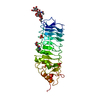
 要素
要素 Homo sapiens (ヒト), (組換発現)
Homo sapiens (ヒト), (組換発現)  Eptatretus burgeri (ヌタウナギ)
Eptatretus burgeri (ヌタウナギ)

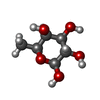




 X線回折 / 使用した結晶の数: 1
X線回折 / 使用した結晶の数: 1  試料調製
試料調製 シンクロトロン / サイト: PAL/PLS
シンクロトロン / サイト: PAL/PLS  / ビームライン: 4A / 波長: 1 Å
/ ビームライン: 4A / 波長: 1 Å 解析
解析 分子置換
分子置換 ムービー
ムービー コントローラー
コントローラー



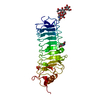
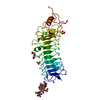



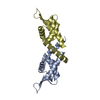
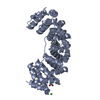

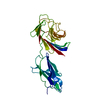



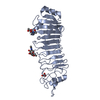

 PDBj
PDBj













